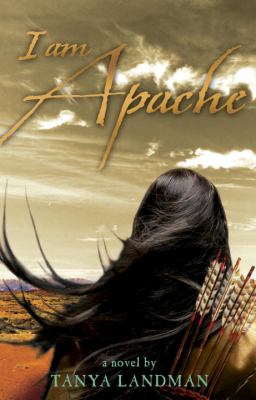
by Tanya Landman.
Publishers Weekly
: On the shortlist for the 2008 Carnegie Medal, Landman's U.S. debut takes its inspiration from references to a woman warrior who fought alongside Geronimo. Landman's own heroine, the narrator Siki, is 14 when she witnesses Mexicans murder her younger brother and vows revenge. Proving herself a brave and cunning fighter, she is allowed to accompany the strongest men on raids against their ruthless enemies, who desecrate the earth by digging mines. The White Eyes, Siki knows, had no understanding that the bounty of Mother Earth was made for all to share.... They hoarded more than they needed, piling it all into a great heap that they defended like snarling dogs. Siki also experiences visions (or has the Power, as Landman puts it), and she faces test after test of her loyalty. Some readers may be put off by the deliberately exotic tone of Siki's voice: I could not see the face of [my enemy] Keste, but my presence was like a pebble dropped into a still pool: his ill humor rippled outward. Others, however, will relish her fiery spirit and feel the joy of her victories and, when ultimate defeat appears imminent, share the pain of her losses. Ages 12–up. (Aug.) Copyright © Reed Business Information, a division of Reed Elsevier Inc. All rights reserved. Distributed by Syndetic Solutions Inc. Terms
School Library Journal: Gr 7 Up—At the end of the 19th century, 14-year-old Siki is a member of Arizona's (fictional) Black Mountain Apache, and an orphan who lost both parents in battles with Mexicans. When she witnesses the brutal slaying of her four-year-old brother, Tazhi, by Mexican raiders, she vows to avenge his death and earns an unusual place, through her skills and relentless training, as a warrior among the men of her tribe. In an overwrought, floridly poetic first-person narrative (e.g., "the wind flowed in [Tazhi's] veins, and the sun itself seemed to shine through his eyes when he smiled"), Landman takes readers on a complex adventure full of jealousy, romance, visions, dark family secrets, bloody battles, daring rescues, and painful dealings with Mexicans and double-crossing "White Eyes." Historical accuracy is questionable, despite research evident not only in an extensive bibliography, but also in Siki's copious explanations of tribal ways and customs. Landman states in a historical note that every tribe and place name is fictional, and that she's "made no attempt to produce an accurate historical novel." Despite some efforts to create complex, "real" human characters and interactions, readers will certainly take away a notion of the Apache as wronged but brutal, doomed, vengeful warriors, and 19th-century Mexicans as heartless villains. Exciting, but problematic, to say the least.—Riva Pollard, Prospect Sierra Middle School, El Cerrito, CA Copyright © Reed Business Information, a division of Reed Elsevier Inc. All rights reserved. Distributed by Syndetic Solutions Inc. Terms
|


